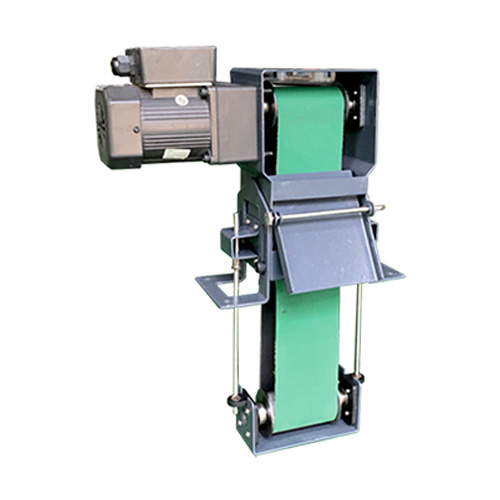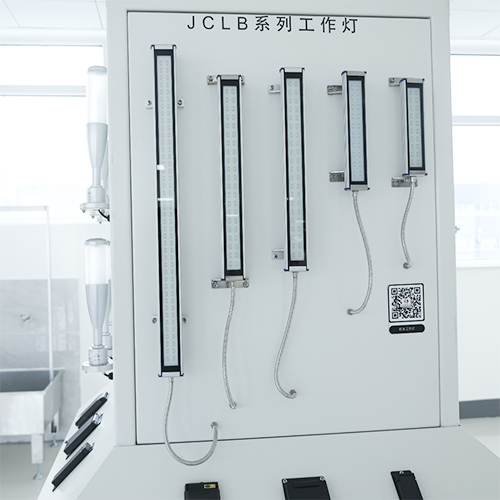-
WhatsAPP: +86 18706448138
-
Tengzhou, Shandong, China

Choosing the Right CNC Oil Skimmer: A Quick Guide
By integrating a CNC oil skimmer into your operations, you can extend coolant life, enhance tool performance, and create a safer workplace.
Table of Contents
Introduction

In the fast-paced world of CNC machining, maintaining optimal machine performance and coolant quality is critical for efficiency, cost savings, and environmental compliance. One often overlooked yet vital tool in achieving these goals is the CNC oil skimmer. These devices play a pivotal role in removing tramp oil—unwanted oil that mixes with coolant—from CNC machine coolant systems. By integrating a CNC oil skimmer into your operations, you can extend coolant life, enhance tool performance, and create a safer workplace. As a leading developer and manufacturer of CNC machine electrical components, Shansen understands the importance of precision and reliability in machining processes. This guide will walk you through everything you need to know about selecting the right CNC oil skimmer for your facility, ensuring your operations run smoothly and sustainably.
Why CNC Oil Skimmers Are Essential for Machining
CNC machines rely on coolants to lubricate and cool cutting tools during operation. However, oils from lubricants, hydraulic systems, or raw materials often contaminate the coolant, forming a layer of tramp oil. This contamination can reduce coolant effectiveness, leading to overheating, tool wear, and bacterial growth. A oil skimmer addresses these issues by continuously removing tramp oil from the coolant surface, ensuring cleaner fluids and better machine performance. Shansen, a trusted name in CNC machine components, recognizes that incorporating a oil skimmer into your setup can significantly improve operational efficiency and product quality.
The Impact of Tramp Oil on CNC Operations
Tramp oil, which includes lubricants like slide oil or hydraulic oil, floats on the coolant’s surface and creates a barrier that prevents oxygen from reaching the fluid. This environment fosters anaerobic bacteria, leading to foul odors, corrosion, and reduced coolant life. Without a CNC oil skimmer, tramp oil can also cause mist and smoke, posing health risks to workers and reducing workplace safety. By removing this oil, a oil skimmer not only extends the life of your coolant but also minimizes maintenance downtime and ensures compliance with environmental regulations.
Types of CNC Oil Skimmers
CNC oil skimmers come in various designs, each suited to specific applications and tank configurations. Understanding the different types available can help you choose the right one for your CNC machining needs. Below, we explore the three most common types of oil skimmers: belt, disc, and tube skimmers.
Belt CNC Oil Skimmers
Belt skimmers use a continuous loop of oleophilic (oil-attracting) material, typically polyurethane or stainless steel, to collect tramp oil. The belt rotates through the coolant, attracting oil, which is then scraped off into a collection tank. These skimmers are highly efficient for deep tanks or high oil volumes and are ideal for CNC shops with significant oil contamination. Shansen’s expertise in CNC components ensures that belt skimmers can be seamlessly integrated into your existing systems for optimal performance.
Disc CNC Oil Skimmers
Disc skimmers feature a rotating disc that partially submerges in the coolant, attracting oil to its surface. The oil is then scraped off and directed into a collection container. These skimmers are compact, making them suitable for smaller CNC shops or machines with limited space. However, they are less effective in tanks with fluctuating fluid levels, as the disc must remain partially submerged to function properly.
Tube CNC Oil Skimmers
Tube skimmers use a floating tube that moves across the coolant surface, collecting oil as it rotates. The oil is scraped off and collected in a separate tank. Tube skimmers are versatile, working well in shallow sumps or tanks with variable liquid levels. Their compact design and adaptability make them a popular choice for CNC operations with space constraints or fluctuating coolant levels.
Key Benefits of Using a CNC Oil Skimmer
Implementing a CNC oil skimmer in your machining operations offers numerous advantages, from cost savings to improved workplace safety. Here are some of the primary benefits:
- Extended Coolant Life: By removing tramp oil, a CNC oil skimmer prevents coolant degradation, reducing the frequency of coolant replacements and disposal costs.
- Improved Tool Life: Clean coolant ensures better lubrication and cooling, reducing tool wear and extending tool life.
- Enhanced Product Quality: Consistent coolant quality leads to better surface finishes, reducing waste and improving customer satisfaction.
- Environmental Compliance: A oil skimmer helps separate oil from coolant, making waste disposal easier and ensuring compliance with environmental regulations.
- Safer Work Environment: By reducing oil mist and bacterial growth, skimmers create a healthier and safer workplace for operators.
Factors to Consider When Choosing a CNC Oil Skimmer

Selecting the right CNC oil skimmer requires careful consideration of your facility’s specific needs. Here are key factors to evaluate:
Tank Size and Configuration
The size and shape of your coolant tank will influence the type of oil skimmer you choose. Belt skimmers are ideal for deep, narrow tanks, while tube skimmers work well in shallow or irregularly shaped sumps. Ensure the skimmer can be easily installed and fits your machine’s layout.
Oil Type and Viscosity
Different oils have varying viscosities, which affect how effectively a CNC oil skimmer can remove them. For example, belt skimmers handle high-viscosity oils well, while tube skimmers excel at removing lighter oils. Understanding the type of oil contamination in your coolant is crucial for selecting the right skimmer.
Removal Capacity
The volume of oil your CNC machines produce will determine the skimmer’s required capacity. For high oil influx, a belt or tube CNC oil skimmer with a high removal rate is ideal. Shansen’s advanced CNC components can help you assess your oil removal needs to ensure optimal skimmer performance.
Maintenance Requirements
Choose a oil skimmer that is easy to maintain and clean. Skimmers with fewer moving parts, like disc skimmers, often require less maintenance, while belt skimmers may need regular belt replacements. Shansen’s commitment to durable, high-quality components ensures that their recommended skimmers are built to last with minimal upkeep.
Comparison of CNC Oil Skimmer Types
| Skimmer Type | Best For | Advantages | Limitations |
|---|---|---|---|
| Belt Skimmer | Deep tanks, high oil volumes | High efficiency, versatile for various tank sizes | May require more maintenance, less effective in shallow tanks |
| Disc Skimmer | Small tanks, limited space | Compact design, low maintenance | Less effective with fluctuating fluid levels |
| Tube Skimmer | Shallow sumps, variable fluid levels | Adaptable, easy to install | May clog with debris, limited depth capacity |
This table provides a quick reference to help you match the right CNC oil skimmer to your specific needs, ensuring efficient oil removal and coolant maintenance.
How to Optimize CNC Oil Skimmer Performance
To maximize the effectiveness of your oil skimmer, consider the following tips:
- Positioning: Place the skimmer where oil accumulates most, typically near the coolant surface with the most agitation.
- Regular Maintenance: Clean belts, discs, or tubes regularly to prevent clogs and ensure consistent performance.
- Monitor Fluid Levels: Ensure the skimmer’s media remains in contact with the coolant surface, especially for disc skimmers.
- Use Compatible Materials: Choose skimmer materials (e.g., stainless steel for high temperatures) that suit your coolant and oil types.
- Incorporate Automation: Use timers or remote monitoring systems to run the skimmer during off-hours, preventing oil buildup.
Shansen’s expertise in CNC machine electrical components ensures that their recommended skimmers can be integrated with automation systems for seamless operation and enhanced efficiency.
Innovations in Oil Skimmer Technology
The oil skimmer industry is evolving, with advancements that improve performance and ease of use. Modern skimmers now feature automated systems, real-time monitoring, and integration with CNC machine controls. For example, some skimmers come with sensors that detect oil levels and adjust operation accordingly, reducing energy consumption. Shansen, as a leader in CNC machine components, stays at the forefront of these innovations, ensuring that their clients have access to cutting-edge skimmer technology that enhances coolant management and operational efficiency.
Environmental Benefits of Oil Skimmers
Beyond operational benefits, a oil skimmer contributes to sustainability by reducing waste and ensuring proper oil disposal. By separating oil from coolant, skimmers prevent oil from entering wastewater streams, protecting local ecosystems and ensuring compliance with environmental regulations. Shansen’s commitment to sustainable manufacturing aligns with the use of oil skimmers, helping clients reduce their environmental footprint while maintaining high productivity.
Common Mistakes to Avoid When Selecting a CNC Oil Skimmer

Choosing the wrong CNC oil skimmer can lead to inefficiencies and increased costs. Here are common mistakes to avoid:
- Ignoring Tank Size: Selecting a skimmer that doesn’t fit your tank’s dimensions can reduce effectiveness.
- Overlooking Oil Type: Not accounting for oil viscosity or type can result in poor skimming performance.
- Neglecting Maintenance: Failing to maintain the skimmer can lead to clogs or reduced oil removal efficiency.
- Choosing Based on Price Alone: Low-cost skimmers may lack durability or capacity, leading to higher long-term costs.
By working with a trusted manufacturer like Shansen, you can avoid these pitfalls and select a CNC oil skimmer that meets your specific needs.
Conclusion
Choosing the right CNC oil skimmer is a critical decision that impacts your machining efficiency, tool life, and environmental compliance. By understanding the types of skimmers, their benefits, and key selection factors, you can make an informed choice that enhances your operations. Shansen, a leading developer of CNC machine electrical components, is here to help you select and integrate the perfect CNC oil skimmer for your needs. Contact us today to explore our innovative solutions and take your CNC machining to the next level.
FAQ
What is a CNC oil skimmer, and how does it work?
A CNC oil skimmer is a device that removes tramp oil from the surface of coolant in CNC machines. It uses a rotating medium (belt, disc, or tube) to attract oil, which is then scraped off and collected in a separate container, leaving clean coolant behind.
How often should I maintain my CNC oil skimmer?
Maintenance frequency depends on the skimmer type and oil volume. Generally, check and clean the skimmer weekly to ensure optimal performance. Replace belts or tubes as needed, typically every few months.
Can a CNC oil skimmer handle all types of oils?
Different skimmers are better suited for specific oil types. Belt skimmers handle high-viscosity oils, while tube skimmers are effective for lighter oils. Consult with Shansen to choose the right skimmer for your oil type.


